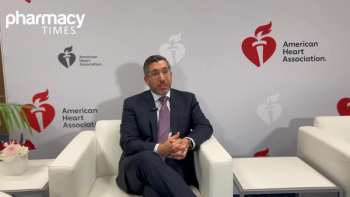
Chemotherapy-Free Treatment Combo Achieves High Rates of MRD Negativity in CLL
A prospective analysis of the CLL14 trial showed that fixed-duration treatment of venetoclax plus obinutuzumab achieved high rates of undetectable minimal residual disease.
Fixed-duration treatment with venetoclax plus obinutuzumab (VenG) demonstrated unprecedentedly high and sustainable undetectable rates of minimal residual disease (MRD) in patients with previously-untreated chronic lymphocytic leukemia (CLL) and coexisting conditions, according to new data presented at the 61st American Society of Hematology Annual Meeting and Exposition.
In this prospective analysis of the phase 3 CLL14 trial, the study authors investigated the prognostic value of MRD detection after fixed treatment with VenG.
The study included 432 previously-untreated patients with CLL with a Cumulative Illness Rating Scale score >6 and/or an estimated creatinine clearance <70 mL/min. Patients received either chlorambucil or venetoclax until completion of cycle 12, and in combination with obintuzumab for the first 6 cycles. Progression-free survival (PFS) was the primary endpoint and MRD was the secondary endpoint.
For patients who responded to treatment, MRD in bone marrow (BM) was assessed at cycle 9 and 3 months after end of treatment (EOT). The authors analyzed outcome according to known MRD risk groups, such as detectable and undetectable, as well as to known clinical and biological risk factors.
Overall, on the basis of the intention-to-treat population, VenG achieved higher rates of undetectable MRD at EOT compared with chlorambucil and obinutuzumab (ClbG), according to the results. Detectable MRD in peripheral blood (PB) was found in 8.8% of patients treated with VenG and 47.7% of patients treated with ClbG. Of these, 5.1% of VenG-treated patients versus 21.8% of ClbG-treated patients had intermediate MRD at ≥10-4-<10-2
and 3.7% versus 25.9% of patients, respectively, had high-positive MRD at cut-off 10-2.
Of the 19 VenG-treated patients with detectable MRD, 64.3% had unmutated IGHV, 22.2% had a TP53 disruption, and 17.6% had a complex karyotype.
Additionally, achieving undetectable MRD in PB with VenG was associated with a high proportion of patients with corresponding BM clearance of 74.8%, with only 4.9% of patients being BM MRD-detectable, according to the data.
When measured by next-generation sequencing, depth of MRD response was more profound in VenG compared with ClbG (<10-5: 67.6% vs. 19.9%, <10-6: 42.1% vs. 6.5%). Considering patients with undetectable MRD in PB at EOT, the time to MRD re-detection was longer with VenG than with ClbG (median 17.7 months and 34 (20.9%) re-detection events with VenG versus median 7.5 months and 55 (72.4%) re-detection events with ClbG, HR 0.192, 95% CI 0.124-0.296), the authors noted.
Furthermore, undetectable MRd was associated with favorable PFS rates at 24 months compared with detectable MRD: 89.1% versus 61.9% in VenG and 93.9% versus 32.6% in ClbG, respectively. Median PFS was not reached in undetectable MRD groups.
“Further landmark analysis of PFS by MRD status showed that undetectable MRD translated into improved PFS regardless of clinical response at EOT,” the authors said.
To conclude, the authors noted that the findings confirm the prognostic value of MRD assessment at EOT for VenG in this patient population. Additionally, due to the high concordance of undetectable MRD in PB and BM in the context of VenG, BM assessments may not be required for these patients, according to the study.
The findings were presented on Saturday in an oral abstract session at the meeting, which is being held December 7-10, 2019 in Orlando, Florida.
Reference
Fischer K, Ritgen M, Al-Sawaf O, et al. Quantitative analysis of minimal residual disease (MRD) shows high rates of undetectable MRD after fixed-duration chemotherapy-free treatment and serves as surrogate marker for progression-free survival: a prospective analysis of the randomized CLL14 trial [abstract 36]. Presented at ASH Annual Meeting & Exposition. December 7, 2019. Orlando, Florida.
Newsletter
Stay informed on drug updates, treatment guidelines, and pharmacy practice trends—subscribe to Pharmacy Times for weekly clinical insights.















































































































































































































